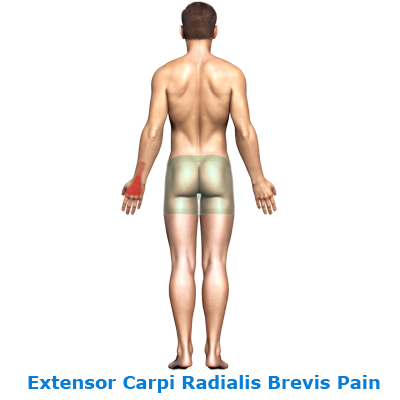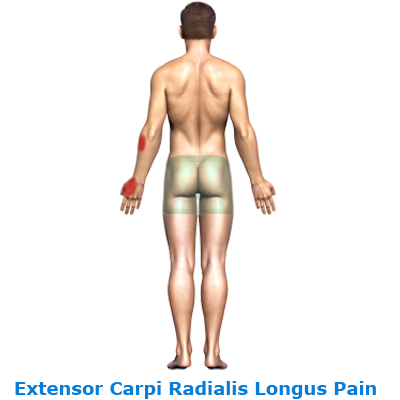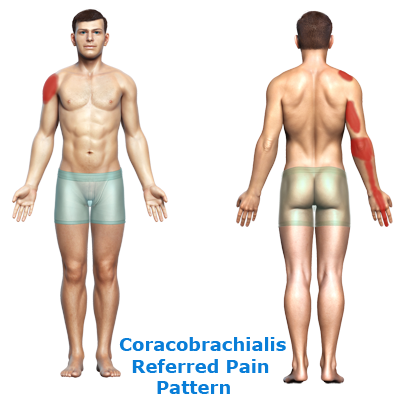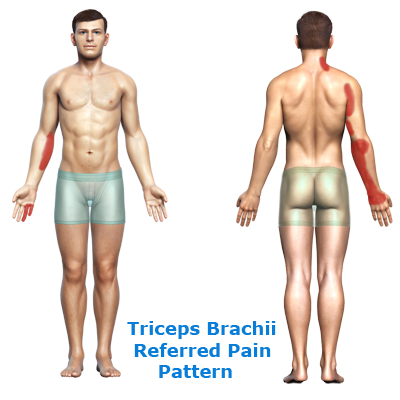
The lumbricals of the hand are four muscles found between the fingers.
The muscles contribute to pain and stiffness in the fingers and the hand.
The Location and Movements of Lumbrical Hand Muscles
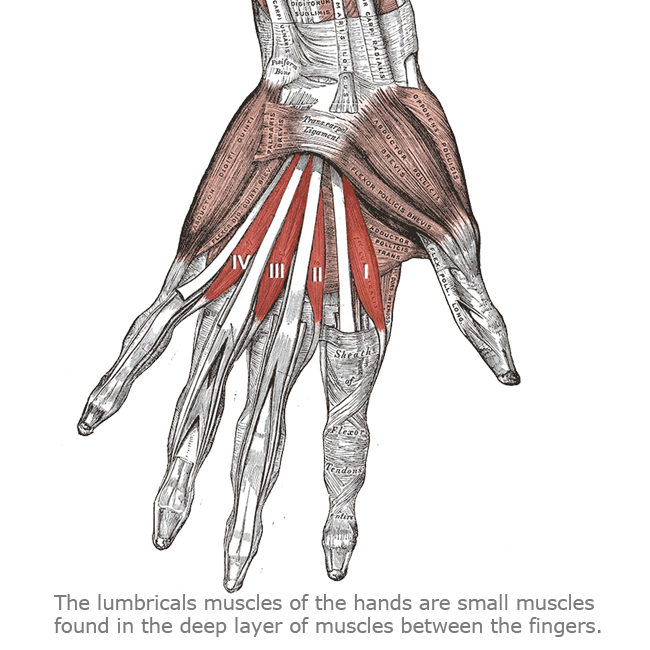

The lumbrical muscles are found between the four fingers. The muscles do not connect to bones; instead, they attach to the tendons of the flexor digitorum profundus muscle and connect into the extension expansion, which are connective tissues of the hand.

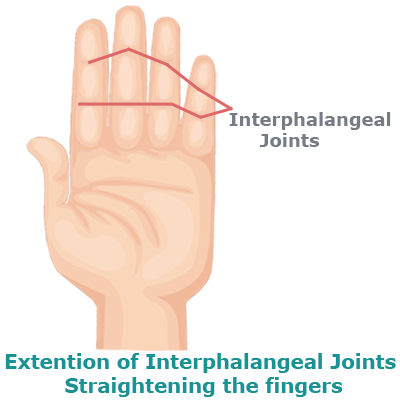
The lumbrical muscles of the hand bend the fingers down toward the palm at the first knuckle (flexion of the metacarpal joints) and straighten the fingers at joints in the fingers (extension of the interphalangeal joints).
Lumbrical Hand Muscle Pain And Symptoms
Symptoms include:
- Pain in the fingers,
- Pain in the index and little fingers pain is the most common
- Pain in the finger joints
- Stiffness in the finger joints
- Pain and or stiffness while closing and opening the hand
- Pinching using the thumb and fingers is painful
- Gripping objects such as pens, pencils, and needles for hand sewing or knitting between the thumb and fingers causes pain and discomfort.
The lumbrical muscles are small but can cause a lot of pain. The pain generally affects the index and little fingers but can affect other fingers, whether one, two, or all four.
The muscles also contribute to stiffness in the joints of the fingers. You may have pain and stiffness when opening and closing the hand. It may be difficult and painful to grasp and hold items like pencils and other small objects.
Other muscles that should be examined with the lumbricals:
The hand lumbrical muscles are affected and can have an effect on these conditions.
CARPAL TUNNEL SYNDROME | DE QUERVAIN'S STENOSING TENOSYNOVITIS | DUPUYTREN'S CONTRACTURE | FINGER PAIN | GANGLION CYSTS | HAND PAIN | RAYNAUD'S DISEASE | THORACIC OUTLET SYNDROME
The Causes Of Hand Lumbrical Muscle Pain
Common Contributors To Lumbrical Hand Pain
- Activities that require constant use of the thumb and fingers in a pincher motion
- Extended periods of writing with a pen or pencil
- Artistic painting
- Extended periods of knitting, crocheting, or hand sewing
- Pulling weeds
- Playing musical instruments such as the violin, cello, and guitar.
Activities that require prolonged grasping or pinching between the thumb and the fingers overwork the lumbrical muscles. Handwriting, artistic painting, sewing and knitting, and pulling weeds for prolonged periods are known stressors for the lumbrical muscles.
Doctors and therapists who use the pincher grip for diagnoses and treatments may experience pain and stiffness in their hands. People who play string instruments, guitar, violin, and cello must also protect their hands and fingers from overuse, leading to pain and stiffness.
How To Avoid Development of Trigger Points In The Lumbrical Muscles
Maintenance is the key to keeping pain, stiffness, and trigger points at bay. Take frequent breaks when doing tasks that require repeated grasping or pinching movements. Stretch the hands, wrists, and forearms throughout the day. Use a massage ball to roll the palm (not recommended for the back of the hand) and the forearms. Simple preventative measures will help keep the muscles and joints healthy and pain-free.
Products I Use and Recommend For Hand Pain
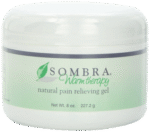 Sombra Warming Gel is recommended for relaxing muscles and relieving pain. It warms without the burning heat of other gels. An excellent choice for pain caused by trigger points, muscle/joint overuse and stiffness, and arthritis. Somba is excellent for those with chronic hand pain; it provides almost instant relief. (Not sold in stores)
Sombra Warming Gel is recommended for relaxing muscles and relieving pain. It warms without the burning heat of other gels. An excellent choice for pain caused by trigger points, muscle/joint overuse and stiffness, and arthritis. Somba is excellent for those with chronic hand pain; it provides almost instant relief. (Not sold in stores)
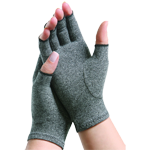 Whether the pain in your hands is caused by trigger points, a muscle injury or arthritis, compression has been shown to help with pain relief. The Imak Compression Arthritis Gloves are some of the best on the market. The gloves provide gentle compression, which helps decrease both pain and inflammation.
Whether the pain in your hands is caused by trigger points, a muscle injury or arthritis, compression has been shown to help with pain relief. The Imak Compression Arthritis Gloves are some of the best on the market. The gloves provide gentle compression, which helps decrease both pain and inflammation.
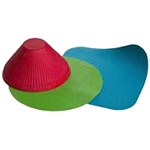 If I could recommend one product that every house should have, it would be these Jar Grips. Hand and arm injuries often happen while straining to open jars and bottles. These are reasonably priced, last forever, and will save you from the pain of strained muscles.
If I could recommend one product that every house should have, it would be these Jar Grips. Hand and arm injuries often happen while straining to open jars and bottles. These are reasonably priced, last forever, and will save you from the pain of strained muscles.
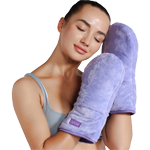 If you have painful, stiff hands due to old injuries and arthritis, the REVIX Microwavable Heating Mittens will help relieve your discomfort. Clay beads and flaxseeds provide soothing heat and moisture, relieving pain and stiffness better than traditional dry heat heating pads. Two mitts are in the package.
If you have painful, stiff hands due to old injuries and arthritis, the REVIX Microwavable Heating Mittens will help relieve your discomfort. Clay beads and flaxseeds provide soothing heat and moisture, relieving pain and stiffness better than traditional dry heat heating pads. Two mitts are in the package.
Lumbrical Muscles Trigger Point and Massage Self-Treatment
We seldom think about the use and abuse that our hands experience. But when they become painful, they can make everyday tasks painful and, in some cases, impossible to do.
We often blame the pain and stiffness on arthritis, but other possible causes exist. Trigger points in the muscles often cause hand pain and stiffness.
Trigger points are pea-sized knots in the muscle that not only cause pain around the knot but can also refer or send pain to other areas of the body.
Though there is some disagreement about whether trigger points develop in the lumbrical muscles, massaging the muscles relieves pain and stiffness. Check for small knots and tight bands throughout the muscles, paying close attention to the area around the Xs.

Trigger points in the 1st lumbrical of the hand. Pain radiates into the outside of the index finger and descends toward the wrist.
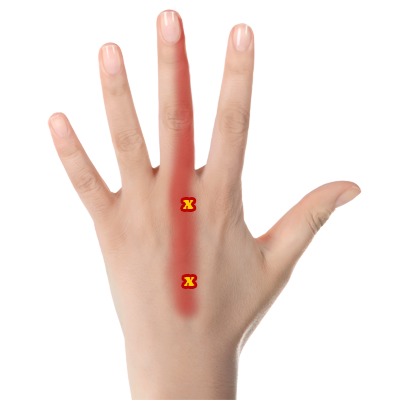
Trigger points in the 1st lumbrical of the hand. Pain radiates into the outside of the index finger and descends toward the wrist.
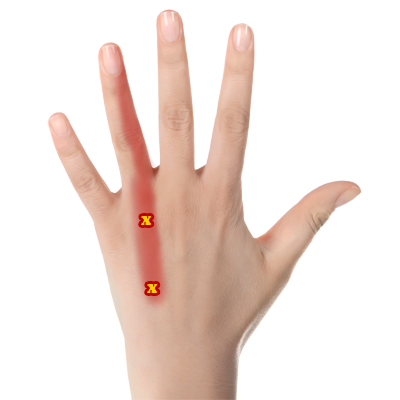
Trigger points in the 3rd lumbrical sends pain into the finger and down into the back of the hand.
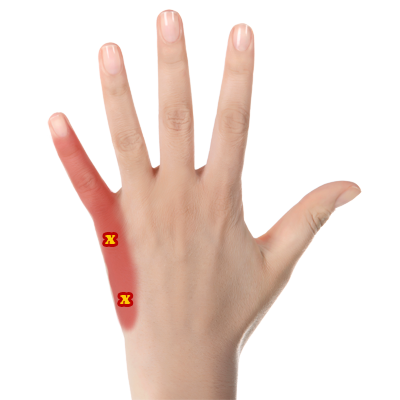
Trigger points in the 4th lumbrical refer pain into the little finger, down to the pad under the little finger, and toward the wrist.
Trigger Point Self-Treatment
How To Locate Trigger Points In The Lumbrical Muscles
Using the images above as a guide, search for areas in the muscle(s) that are very tender. You may feel a small knot or a small tight band.
When you find an exceptionally tender spot, stop and apply pressure for 10 seconds, then let go. Wait at 10 seconds and apply pressure again, no longer.
Repeat this 2-3 times per treatment and spread 3-4 treatments throughout the day. Pressure should be enough to think this hurts but feels good, not so much that there is pain. Applying extreme pressure or holding pressure for longer than 10 seconds can do more harm than good and may cause bruising or soft tissue damage.
How Long Before I Feel A Reduction In Pain?
The good news is that many notice a reduction in pain after 1-2 treatments. However, the pain will usually return. It is important to continue treating the area until you no longer experience pain when pressure is applied, which can take several days.
Interesting Facts
- The lumbrical muscles are unusual because they do not connect to a bone. They connect four tendons extending from the flexor digitorum profundus into tendons connected to the extensor digitorum.
Learn More About Trigger Point Treatment
Trigger points develop in muscles throughout the body. Most are easily treated once you learn the location and feel of small knots, tight bands and recognize referred pain.
If you are interested in learning about trigger points and referred pain patterns, I recommend The Trigger Point Therapy Workbook. It is an excellent resource for learning about the trigger point and referred pain phenomenon and has diagrams for TrP locations and treatment.
If you find trigger points in the lumbricals, you will want to check these muscles for additional trigger points, known as satellite trigger points.
- Muscles of Lower Arm
- Abductor Pollicis Brevis
- Opponens Pollicis
- Adductor Pollicis
- Latissimus Dorsi
- Pectoralis Major
- Scalenes
- Triceps Brachii
ADVERTISEMENT

